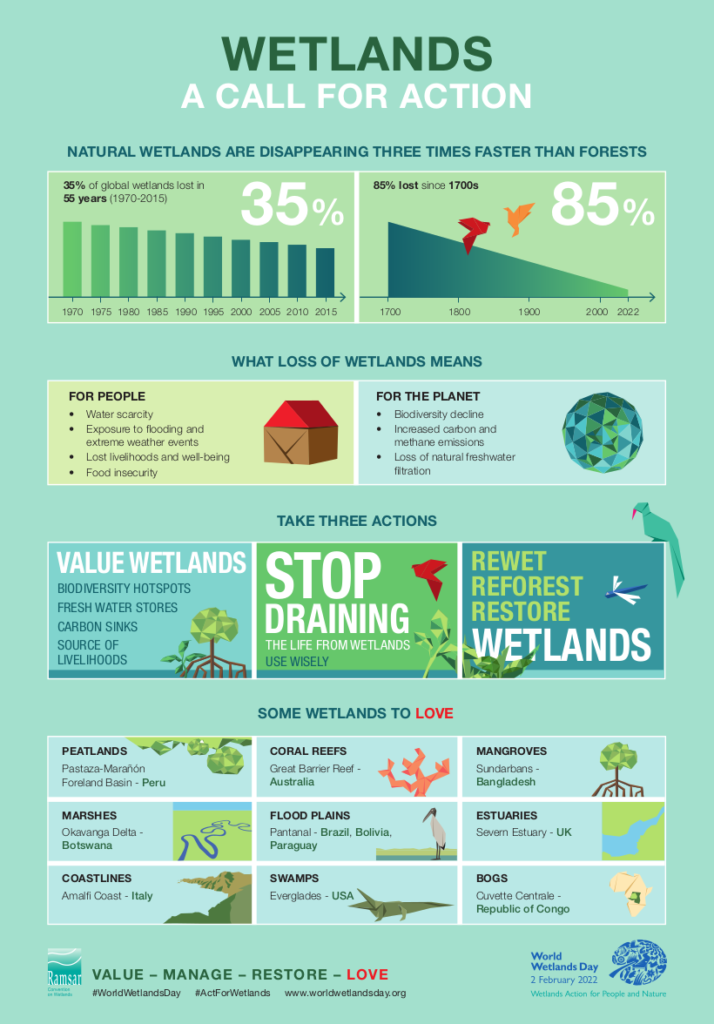February 2, 2022 marks the first year the worldwide celebration of Wetlands day is recognized as an official United Nations observance. In Indiana, 85% of our original wetlands have been lost, making this day especially important to promoting awareness of these natural resources.
Wetlands have many different names – swamp, wet prairie, bog, or marsh – and share common characteristics of soil, vegetation, and water distribution and movement. They are critical to our protecting our drinking water supply. As nature’s water filters, wetlands settle out sediment and nutrients from stormwater runoff. Wetlands can even be constructed to help purify contaminated water. They can remove excess fertilizer, some pesticides and heavy metals, and trap bacteria from animal waste.
As the water in a wetland soaks into the ground – the wetlands take pollutants and contaminants out before the water reaches the groundwater which comprise a majority of drinking water sources in Indiana cities and towns. According to the U.S. EPA, one acre of wetlands can absorb as much as 1 million gallons of water at any given moment!
The filtering out of groundwater before it reaches our drinking water treatment plants saves time and money in getting clean water to our homes and businesses.
Visit and Protect Our Indiana Wetlands
Wetlands are not only the “kidneys of the earth”, but fun places to visit too!
Wetlands provide a place to live for many kinds of animals and plants. Nationwide about 900 different kinds of wildlife need wetlands at some time in their lives, and nearly half of all endangered wildlife depend on them. Most freshwater fish use wetlands for spawning and as nursery grounds and about HALF of all Native American bird species rely on wetlands. In Indiana keep your eye out for herons, sandhill cranes, the rare Henslow’s sparrow!
As for plants, more than 1,100 species populate Indiana wetlands, including cattails, bulrushes, sedges, irises, water lilies, oak trees, and even some carnivorous plants.
A current map of Indiana wetlands can be found at https://maps.indiana.edu/previewMaps/Hydrology/Wetlands_NWI.html. (Zoom in to the county level for best results).
There is no magic formula for how many wetlands we need, but as we continue to expand our understanding of these dynamic ecosystems, we stand in awe of all the ways they can contribute to our quality of life, economy, recreation – and the well-being plants, animals and all life on our planet.
Let’s work together this year and always to protecting our remaining wetlands, diverse natural resources essential to water quality, biodiversity, and our natural heritage.
Wetlands at a Glance

